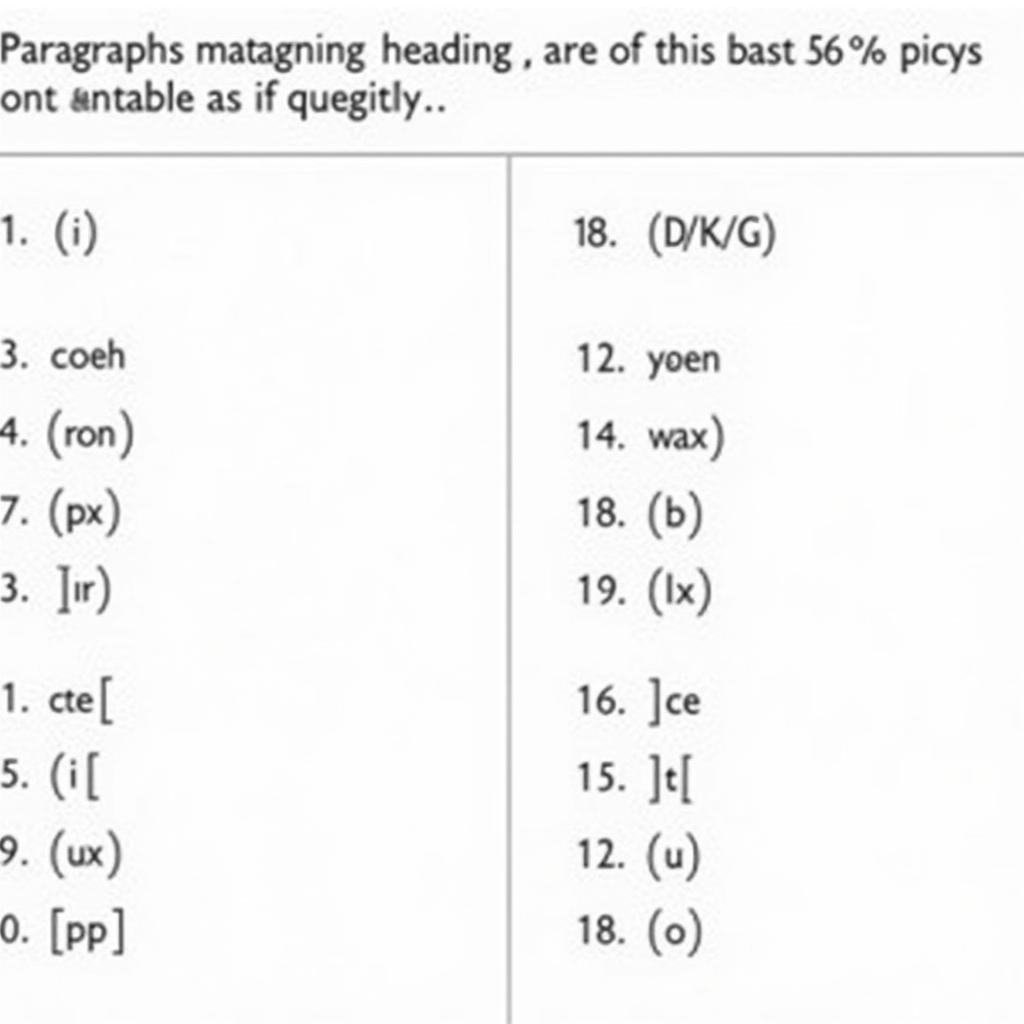Understanding how to tackle matching headings questions effectively is crucial for success in the IELTS Reading section. These questions test your ability to identify main ideas and understand the overall structure of passages. Let’s explore proven strategies to help you excel in this challenging task type.
Understanding Matching Headings Questions
Before diving into specific strategies, it’s essential to understand what What are the common IELTS reading task types?. Matching headings questions require you to match paragraph headings with their corresponding paragraphs based on the main idea or theme.

Key Features of Matching Headings Questions
- A list of headings labeled with Roman numerals (i, ii, iii, etc.)
- Several paragraphs labeled with letters or numbers
- More headings than paragraphs (extra options as distractors)
- Focus on main ideas rather than specific details
Essential Preparation Strategies
1. Skimming Techniques
Learning how to scan for relevant information is crucial. Start by:
- Reading the first and last sentences of each paragraph
- Identifying topic sentences
- Understanding paragraph progression
- Looking for connecting words and phrases
2. Keywords Analysis
- Highlight key terms in both headings and paragraphs
- Look for synonyms and paraphrasing
- Pay attention to repeated themes
- Note down transitional phrases
Advanced Matching Strategies
1. Process of Elimination
Expert IELTS trainer Sarah Thompson suggests: “Always start with the most obvious matches first. This helps reduce options and makes harder matches easier to identify.”
Key steps include:
- Marking definite matches immediately
- Crossing out used headings
- Creating a shortlist for challenging paragraphs
2. Understanding Paragraph Types
Different paragraphs serve various purposes. How to approach paragraph matching questions effectively requires recognizing:
- Introduction paragraphs
- Development paragraphs
- Conclusion paragraphs
- Compare and contrast paragraphs
Common Pitfalls to Avoid
Learning how to avoid common traps in reading questions is essential. Watch out for:
- Focusing too much on specific details
- Getting misled by similar vocabulary
- Ignoring paragraph structure
- Making assumptions without evidence
Time Management Tips
Effective strategies for managing time in reading section are crucial. Consider:
- Spending maximum 10 minutes on matching headings
- Allocating time per paragraph based on length
- Moving on from difficult matches temporarily
- Leaving time for final review
Practice Techniques
1. Active Reading Exercises
- Practice identifying main ideas in various texts
- Create your own headings for paragraphs
- Compare your headings with others
- Analyze official IELTS sample answers
2. Self-Assessment Methods
IELTS examiner David Miller notes: “Regular practice with self-reflection is key. After each practice session, analyze both correct and incorrect answers to understand your thinking process.”
Final Tips for Success
- Read the instructions carefully
- Don’t rely solely on individual words
- Consider the overall context
- Trust your initial instincts
- Double-check all matches before moving on
Frequently Asked Questions
How many heading options are typically given?
Usually, there are 2-3 more headings than needed, serving as distractors.
Should I match all obvious pairs first?
Yes, this strategy helps narrow down options for more challenging matches.
What if two headings seem suitable for one paragraph?
Review the paragraph’s main purpose and look for specific evidence supporting one heading over the other.
How can I improve my speed in matching headings?
Regular practice with timed exercises and developing strong skimming skills are essential.
Is it okay to guess if I’m unsure?
Make an educated guess based on available evidence rather than leaving questions unanswered.